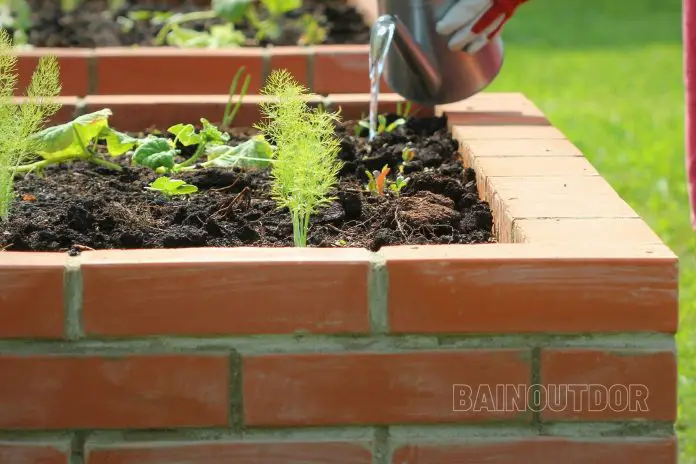Are you growing plants in a tent? Sometimes the tent can have very low humidity and maybe looking for ways to raise it. As a gardener, you know any moisture below forty percent is something to worry about for plant growth. No one likes when their plants in a grow tent have to die because of the relatively low humidity. Plants need moisture to grow, and very low humidity can make them have stunted growth, which is a great loss to the owner. In this guide, we will discuss the various ways on how to raise the humidity in growing plants.
Why Should You Raise The Humidity?
Well, plants grow where there is sufficient water. Water does not only help the plant to grow, but also to cool it. A plant that lacks enough water is at risk of dying. The moisture helps keep the plants in good condition. If the stomata get closed, the plant can’t take up water anymore. Imagine how you would survive if you are not constantly dehydrated. Plant hydration is also important for them to stay alive in the tent. Dehydration in plants forces the roots to absorb more water to maintain the minimum humidity needed for their growth.
Ideal Humidity Levels
Before trying to increase the humidity, it is important to know what percentage is needed. It helps you determine by how much moisture you to increase. Different plants require different humidity levels. Target what you wish to achieve with the plants available in your grow tent. The good thing with grow tents is that you get control over the plants and their growth in general.
The outcome of the plants solely depends on your involvement in the whole growing situation. For vegetables to avoid having stunted growth, the humidity levels should be somewhere between fifty to seventy percent. As for the seedlings, they haven’t developed their root yet. They, therefore, do not have ways to absorb water and moisture from the environment.
A humidity of seventy to seventy percent is enough to keep them going. The two categories need high humidity levels. Plants that need a humidity of 50 percent and below are flowering plants. Flowering plants will require humidity between forty and fifty percent humidity. Also, at the time of harvesting any plants in your grow tent, you will need it to be between 45%-50%.

1. Use A Humidifier
Humidifiers are what are commonly used in many grow tents. It is a great investment to make for a gardener. It works by emitting cool mist inside the tent to create a cool environment for the plants to survive while growing. When placing it on the tent, avoid direct contact. The humidifier should spray directly onto the plants, put it somewhere close inside the grow tent. When buying one, invest in one that comes with a built-in humidistat. It works automatically to control the amount of moisture, temperature, and airflow.
2. Combine Plants
In your grow tent, mix the younger and the mature plants. Mature plants have developed roots and respire efficiently more than the younger ones. If you combine all of them in one grow tent, the young plants will achieve added benefits to attain moisture. When they respire, they release water vapor into the air, which the more immature plants can use to feed.
3. Using Propagators
Propagators can also help increase the humidity levels. Use the propagators inside the grow tent to help the seedlings by retaining the high levels of humidity. The seeds will grow faster with the right humidity level. You may purchase one or make one for yourself.
4. Remove Fluorescent Bulbs
Fluorescent bulbs provide lighting on the tent as well as increasing the temperatures. If you remove half of the bulbs you have in the grow tent, you can increase humidity.
5. Use Spray Bottles
Every morning, spray the walls of the grow tent with water. Do this in the evenings as well to help increase the level of humidity.
6. Put Air Conditioner
If you have an air conditioner, place it on the grow tent. Humidity gets increased when the temperatures are relatively low. Set the air conditioner in low temperature and let it stay on the tent.
7. Have Proper Air Circulation
To achieve the desired humidity level, it all starts with temperature. There is an exchange of gases in the environment. To ensure there is proper air circulation, ensure there is ventilation on the grow tent. You can also use a fan and adjust it to low settings; it helps circulate the tent’s air.
8. Place Water Sources On The Tent
Add dump sponges in the tent to make it cool and reduce the temperatures inside the tent. Just take precautions not to place them near lighting sources. Water and electricity are not the best of friends; it is better to avoid short-circuiting chances.
Benefits Of Raising Humidity
High levels of humidity make plants absorb much water needed for them to survive. If you do not want to risk seeing your plants in the grow tent dying or getting infested, you will do everything possible to ensure the right humidity level is maintained. The roots won’t overwork to get water as they could absorb more through the stomata as well. The size of the tent also plays an important role in helping keep humidity at the correct levels. Below are ways one can apply to raise the level of humidity in a grow tent.
Knowing how to raise the humidity is something any indoor gardener should know how to do. Using cooling agents on the tent helps reduce the temperatures and thus increase humidity. There are cheaper ways to do this without investing a cooler or fan if you do not own one. For the work to be effective, consider the outside environment around the tent too. Is it cool enough? The environment that surrounds the grow tent plays an important role in increasing water vapor. Protect your plants in a grow tent by maintaining the right levels of humidity.
































